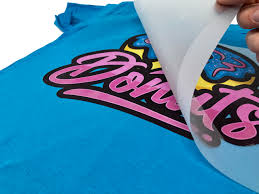Introduction
DTF (Direct to Film) printing has changed the game for startup apparel brands. It offers many benefits. These can greatly impact their success and growth. They are in the competitive fashion industry.
Here’s an overview of DTF printing:
How DTF Printing Works
Film Preparation
DTF printing starts with preparing a special, heat-sensitive film. It acts as a carrier for the ink. This film is coated with a heat-activated adhesive layer.
Printing Process
The design is printed onto the prepared film using a DTFLINKO printer equipped with UV-curable or eco-solvent inks. The printer applies the ink directly onto the film, forming the desired graphics, text, or images.
Transfer to Substrate
After printing, the film is carefully placed onto the substrate (e.g., fabric, leather, wood) with the adhesive side facing down. Heat and pressure from a heat press machine are applied to transfer the ink from the film onto the substrate.
Curing and Finishing
Once transferred, the ink is cured under heat to ensure adhesion and durability. After curing, the film is peeled away, leaving behind a vibrant and durable print on the substrate.
Advantages of DTF Printing
Versatility
DTF printing supports many substrates: cotton, polyester, leather, nylon, and more. This makes it good for many uses. It’s great in clothes, accessories, signs, and promo items.
High-Quality Prints
DTF technology allows for high-resolution prints. They have vibrant colors, fine details, and smooth gradients. These are comparable to direct-to-garment (DTG) and screen printing.
Customization
It enables customization with variable data printing (VDP), allowing for personalized designs, names, numbers, and graphics on individual items.
Durability
DTF prints are durable and wash-resistant, offering long-lasting quality suitable for apparel and products subjected to wear and tear.
Cost-Effective for Small Runs
Unlike traditional methods like screen printing, DTF printing requires minimal setup and is cost-effective for small to medium production runs. This reduces overhead costs and allows for on-demand printing.
Considerations for Small Businesses
- Investment
- Training and Expertise
- Market Demand
Here’s how DTF printing serves as a game-changer for startup apparel brands
Versatility in Design and Customization
Personalization
DTF printing allows startup brands to offer highly personalized apparel with custom designs, individual names, numbers, and graphics. This customization capability helps brands cater to niche markets and create unique products that stand out.
Design Flexibility
Brands can easily experiment with various designs, colors, and patterns without the limitations of traditional printing methods. DTF technology supports intricate details and vibrant colors, enhancing creative possibilities.
High-Quality and Professional Appearance
Print Quality
DTF printing produces high-resolution prints with sharp details, vibrant colors, and smooth gradients. This ensures that apparel items have a professional and visually appealing finish, which is crucial for brand image and customer satisfaction.
Check out high quality DTF printers at https://www.dtflinko.com/.
Durability
DTF prints are durable and withstand multiple washes and wear, maintaining their quality over time. This durability is essential for apparel brands looking to deliver long-lasting products that meet consumer expectations.
Low Setup Costs
Compared to traditional printing methods like screen printing, DTF printing requires minimal setup costs. This makes it more accessible for startups with limited budgets and allows them to start small and scale production as their business grows.
Speed and Efficiency
Quick Turnaround Times
DTF printers offer fast printing speeds and turnaround times, allowing brands to fulfill orders quickly and meet tight deadlines. This agility is advantageous for responding to market trends and customer demands promptly.
Streamlined Production
With digital workflows and automated processes, DTF printing streamlines production operations and reduces manual labor. This efficiency improves overall productivity and allows brands to focus on scaling their business.
Market Differentiation and Brand Building
Unique Product Offerings
By leveraging DTF printing, startup brands can differentiate themselves in the market with custom-designed apparel that reflects their brand identity and values. This uniqueness helps attract loyal customers and build brand recognition.
Brand Control
DTF printing gives brands full control over the design and production process, ensuring consistency in quality and brand messaging. This control enhances brand integrity and fosters trust among consumers.
Sustainability and Environmental Benefits
Eco-Friendly Options
Some DTF systems use water-based inks and eco-friendly materials. They minimize harm to the environment compared to solvent-based printing. This aligns with consumer preferences for sustainable fashion choices.
Reduced Waste
On-demand production and minimal setup waste contribute to reducing overall environmental footprint. Startup brands can adopt sustainable practices from the outset, appealing to eco-conscious consumers.
Scalability and Growth Potential
Scalable Production
Startup brands get more customers and products. DTF printing grows with them. Brands can increase production volumes. They can also diversify their product lines. And they can do this while keeping quality and efficiency.
Market Expansion
Brands can use DTF printing to sell customizable apparel. This lets them enter new markets and target specific consumer groups well. This market expansion contributes to business growth and profitability.
Conclusion
In conclusion, DTF printing is a transformative technology for startup apparel brands. They can create customizable, high-quality products. Setup costs are low and flexibility is high. Startups can use DTF printing’s advantages. It can help them stand out. It builds brand value and a place in the tough fashion industry.
Stay tuned for more news & updates on Time Analysis!



